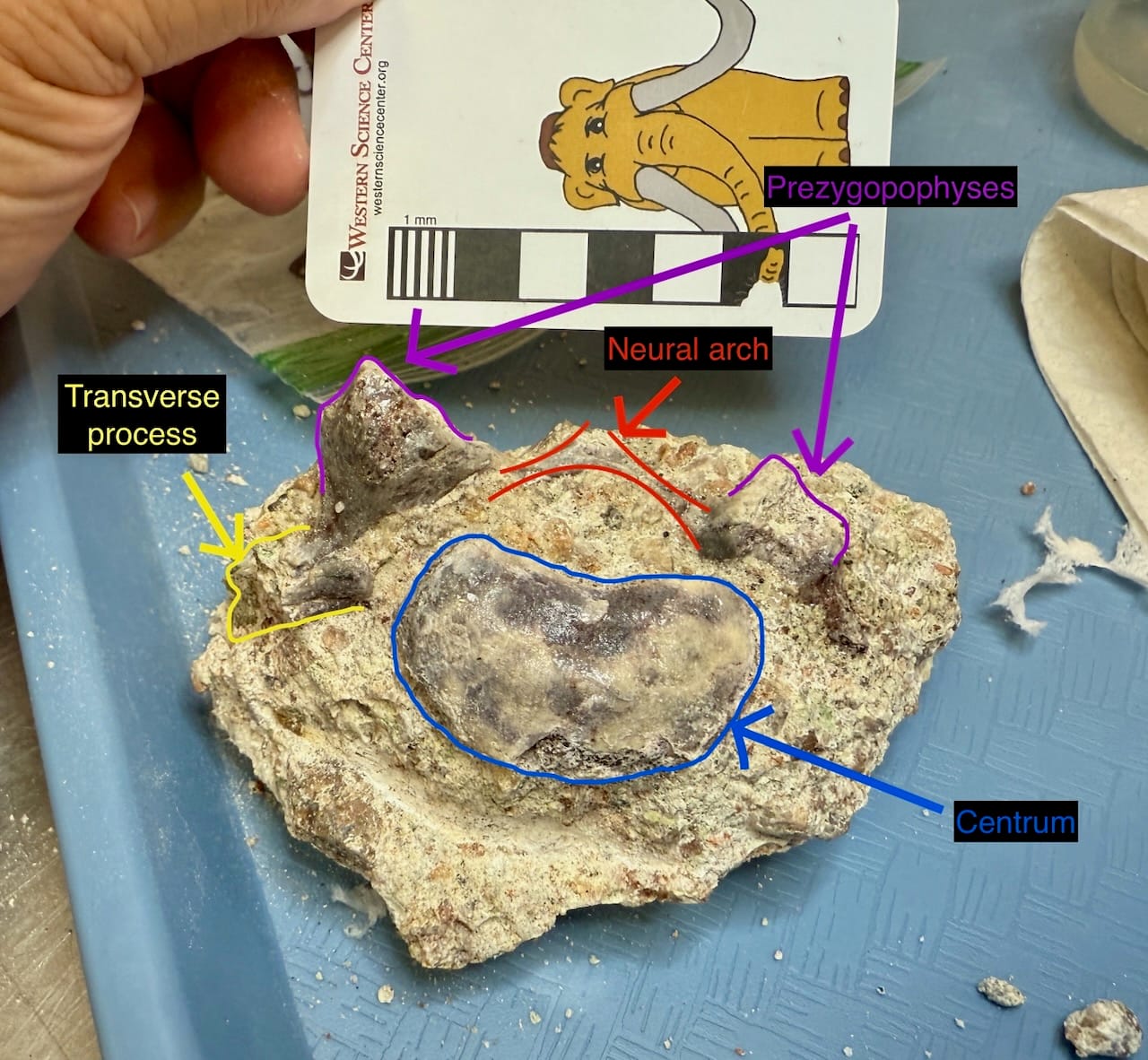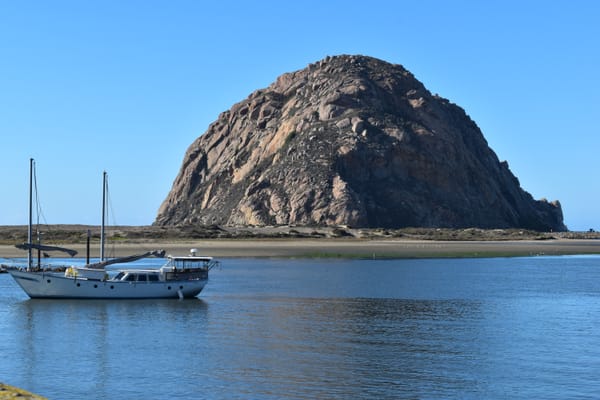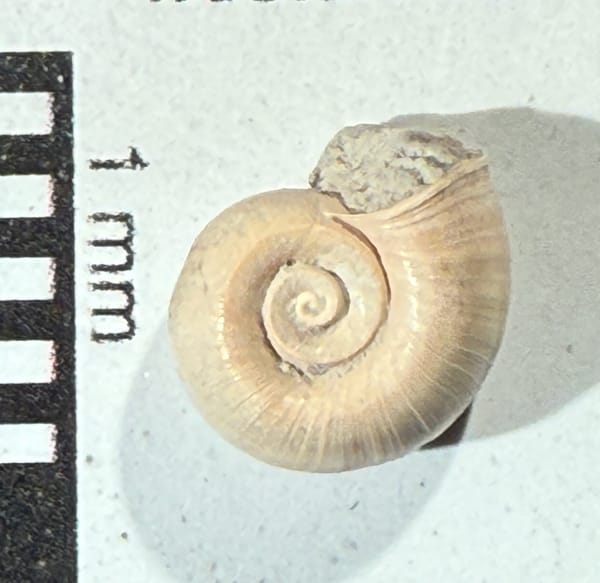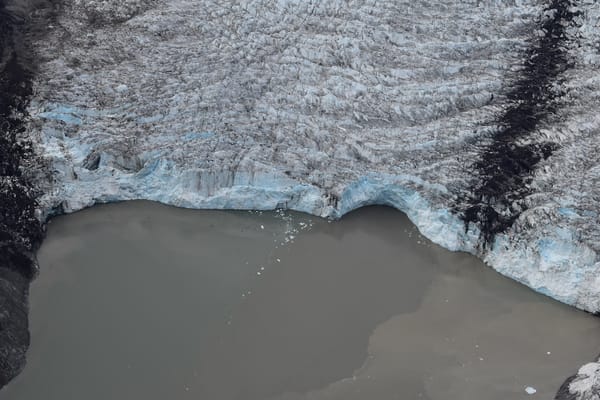More Miocene fossils

Besides the proboscidean tooth I talked about last week, our recent excavation in the Miocene Cajon Valley Formation turned up other interesting remains. Because these sediments were deposited in a fast-flowing stream bed, we don't typically find skeletons. Most of the identifiable remains are isolated teeth, and most bones are just broken fragments. But sometimes we get a little more.
The specimen above is shown as found, still embedded in sediment. It may not look like much, but it's actually one of the most complete individual bones we've recovered from this site. This is a mammal thoracic vertebra, seen in anterior view. Thoracic vertebrae in mammals are the vertebrae that carry the ribs; I talked about them a bit in an earlier post. To help interpret the photo, here's a labeled version:

The vertebra is shown in anterior view, with dorsal toward the top of the image. The main body of a vertebra is called the centrum, which here is outlined in blue. The neural arch sits on top of the centrum; the gap between the arch and the centrum forms a tunnel called the neural canal, which held the spinal cord (in this fossil it's still filled with sediment). The prezygopophyses project forward and would have articulated with the vertebra in front of this one. The transverse processes, only one of which is preserved, stick out to the side and articulated with the ribs.
We can already say a fair amount about the bone just from this image. The fact that the transverse process sits high on the side of the centrum, and the rounded ventral margin of the centrum, both indicate that this vertebra was pretty close to the beginning of the thoracic series. The smooth face of the centrum indicates that the vertebral epiphysis is present and most likely fused to the centrum, suggesting that this vertebra came from an adult animal.
What we don't know yet is what kind of animal the vertebra came from. The most common large mammals in the Cajon Valley Formation are horses, but this vertebra is probably too large to come from many of the horse species, such as Archaeohippus and Parahippus. It's also too small to come from a proboscidean, considering that it's from an adult animal. There are some larger horses and camels that are possibilities, and hopefully after the bone is prepared we might be able to make a more confident identification.

If you like what you're reading, please consider becoming a paid subscriber or leaving a tip. All proceeds go to cover the cost of maintaining the site and supporting research and education at the Western Science Center.



